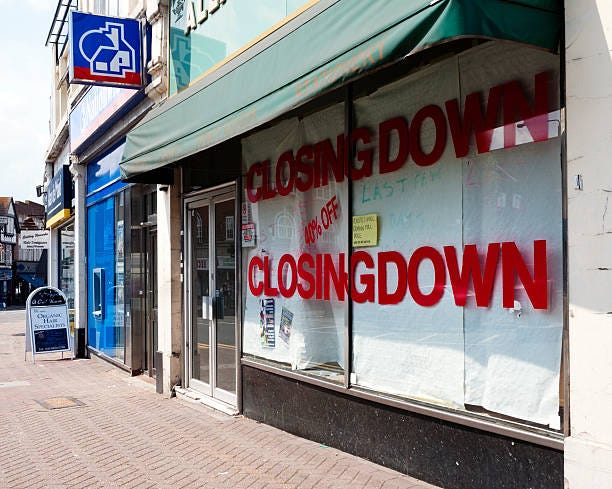The Death of Deposits: Why Traditional Banks May Not Survive the 2030s
Those who continue to rely on yesterday’s business model—while today’s customers move to better, faster, smarter alternatives—will soon find themselves irrelevant.
Published: 2 July 2025
For decades, traditional banks thrived on a model so entrenched it seemed unbreakable: attract savings at low interest, lend at higher rates, and profit from the spread. This deposit-lending model wasn't just a business strategy—it was the backbone of modern credit-based economies. But in a world rapidly reshaped by Big Tech and fintechs, this model is under existential threat.
The quiet revolution began when Apple, through its partnership with Goldman Sachs, offered U.S. customers a high-yield savings account built directly into the iPhone. The interface was seamless, the returns compelling, and the friction almost nonexistent. It didn’t take long for millions to rethink what a “bank” actually is.
2025–2026: The Great Deposit Migration
By the end of 2026, an estimated 20% of new savings accounts in the U.S. will be opened through non-traditional platforms—Big Tech apps or mobile-first fintechs. The impact will be seismic. Savings, once passively held in legacy institutions, are now actively seeking higher yields, better access, and user-centric design.
But this shift is not confined to America. Its ripple effects are global, with particularly complex implications for Europe and Asia.
EU Europe: Tradition Meets Disruption
Europe’s banking ecosystem is deeply fragmented, highly regulated, and historically conservative. It is also about to be disrupted.
Regulatory frameworks like PSD2 (Revised Payment Services Directive) have unintentionally created fertile ground for competition, forcing banks to open their systems to third-party providers. European fintechs—Revolut, N26, Klarna, Bunq—have stepped in. Now, Big Tech is following, albeit slowly due to licensing challenges and regulatory scrutiny.
By 2027, expect Apple- and Google-style savings products to achieve significant penetration in Western European markets. By 2030, up to 40% of savings deposits among younger demographics could be managed outside traditional banks.
Regional and cooperative banks, once bedrocks of local finance, will be particularly vulnerable. Their scale is too small for aggressive digital reinvention, but their customer base is increasingly mobile-native and yield-sensitive.
Asia: Fintechs and Super Apps Take the Lead
In Asia, disruption is not coming—it has arrived.
In China, platforms like Alipay and WeChat Pay have already swallowed large portions of the retail savings and payments market.
In India, the rise of UPI, Paytm, and PhonePe has created digital-first finance at scale.
In Southeast Asia, super apps like Grab and Gojek are integrating wallets, savings, loans, and insurance—often without a banking license in sight.
By 2026–2028, most consumers in Asia’s urban centers will manage their financial lives without ever stepping into a traditional bank. For legacy Asian banks, survival increasingly means partnerships, embedded services, or exit.
System Shock: What Happens When Banks Lose Deposits?
This is not just about competition—it’s about the viability of the banking model itself.
Savings deposits have long been the cheapest and most stable source of funding for banks. They are the cornerstone of lending, liquidity, and even trust. If deposits migrate elsewhere, how can banks continue to lend?
Here’s how banks are likely to react—and the implications for financial stability:
1. Turning to Wholesale Funding
Banks may rely more on capital markets—issuing bonds, borrowing from institutional investors, or securitizing loans. But this funding is more expensive, less stable, and prone to freeze-ups during crises (as seen in 2008).
2. Pursuing Institutional Money
Wealthier clients and corporations may be wooed with tailored savings offers. Yet this base is price-sensitive, far less loyal, and capable of rapid exits.
3. Securitisation and Shadow Lending
Banks may bundle loans into financial products sold off-market. This detaches them from deposits—but introduces systemic opacity and risk, potentially reawakening the ghosts of the subprime era.
4. Becoming Loan Servicers, Not Risk-Takers
Some banks will pivot to originating loans for non-bank lenders (private equity, sovereign wealth, pension funds), earning fees but abandoning core banking functions.
5. Infrastructure Providers
Others may morph into banking-as-a-service (BaaS) platforms—powering fintechs and embedded finance players behind the scenes, like utilities, rather than front-line brands.
Rewriting the Balance Sheet
Traditional Model Future Model
Retail deposits fund loans Institutional/market funding, fees, APIs
Interest margin drives revenue Mix of margin + licensing + servicing fees
High customer inertia Real-time switching and competition
Physical presence essential Fully digital, mobile-native
Without a robust deposit base, banks must lend less, charge more, or shrink altogether. In time, this could affect credit availability, economic growth, and monetary policy transmission, making it not just a banking issue—but a macroeconomic one.
Consumer Gains and Hidden Risks
For consumers, the benefits of this transformation are real:
Higher interest rates
Real-time visibility and control
Better UX and financial tools
Expanded access, especially in underserved areas
But so are the risks:
Weaker deposit protections
Opaque legal liabilities
Limited human support
Massive surveillance risk as tech companies monetize financial data
Cybersecurity concentration in a handful of global platforms
What happens when your savings app gets hacked—or suddenly goes offline?
Conclusion: The Silent Bank Run
The disruption of banking is not happening with protest or panic. It is happening with quiet migrations, elegant interfaces, and API calls. Deposits are walking out the digital door, not with rage—but with a swipe.
Traditional banks now face a stark choice:
Reinvent into platform-centric financial ecosystems, or
Gradually sink into infrastructure utility roles, propping up the very firms displacing them.
Either way, the end of easy banking is here. And those who continue to rely on yesterday’s business model—while today’s customers move to better, faster, smarter alternatives—will soon find themselves irrelevant.
The revolution won’t be televised. But it will be downloaded.
Leon Vermeulen is a Dutch-born IT specialist and AI researcher whose work focuses on ethical AI, inclusive change management, and the societal impact of emerging technologies.




